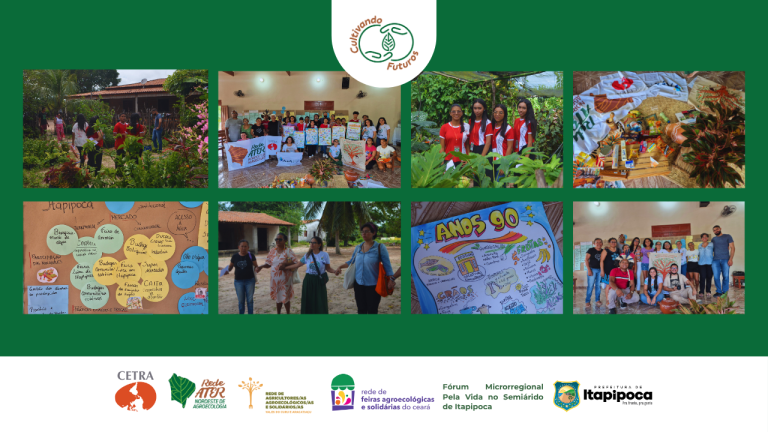Social Technology and Livelihood in the Semiarid Drylands
Social Technology and Livelihood in the Semiarid Drylands – Márcia and Vanderlei’s innovative experientations
In the mountains of ‘Serra do Jordão’, 25km from Sobral municipality, is located the community of ‘Casa Forte’, home to the couple Marcia and Vanderlei. Both are 38 years old and live with their two children, Walisson, 17, and Isabelly, 8. As soon as one arrive to the place, is it possible to see the ‘calçadão water cistern’s broad surface and the surrounding yard, full of plants. For those who do not have a trained eye, the place seems like a perfect mess, but it is with proudness that the couple tell about how it all started and everything that one can find there.
Just before meeting Marcia, Vanderlei made a difficult decision at the time, but that he today regards as his best choice: the money raised to buy a motorcycle was used instead to buy the small land property where he now lives with his family. “This piece of land was worth nothing, so I worked hard the ground and now, look how those beans are”, says Vanderlei pointing to the big bean-filled stalks at harvest point. At first, only cashew trees grew there, but gradually they filled the yard with other fruit trees, such as sugar apple, well adapted to the mountainous region.
“I always worked as a farmer, but only corn and beans wouldn’t do. Then I started raising chicken. And then I got a goat from ‘Cabra Nossa’ project, to have some milk for the boy”, says Vanderlei. The ‘Our Every Day Goat’ project, led by the Diocese of Sobral, was the first project the family took part in, back in 2001. They received a goat and then passed on its two offspring to another family. This way the couple could raise their first child, Walisson.
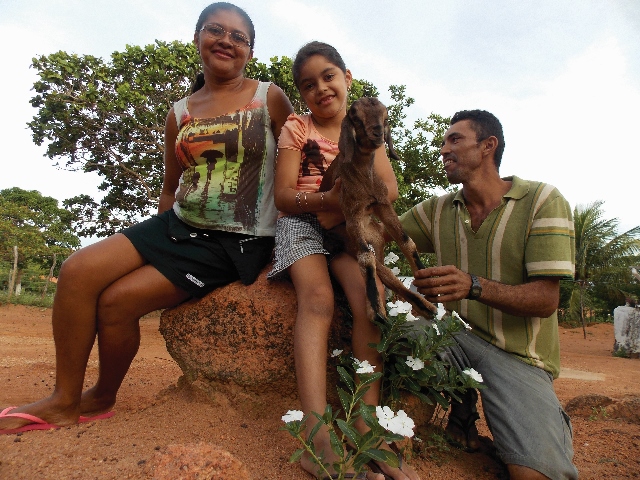
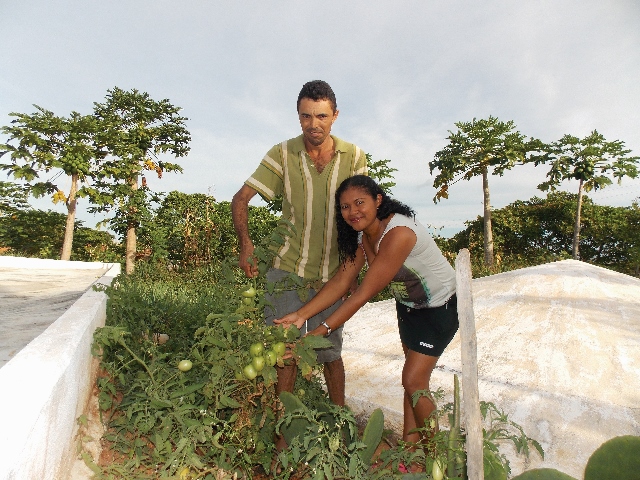
In 2003 the first water cistern was built with the help of the São Francisco Association, another community in Serra do Jordão, to which Vanderlei became an associate. The family grew stronger and the yard more diverse.
In 2012, still through the São Francisco Association, the family found out they could receive a ‘2nd water’s cistern’, the so called ‘boardwalk type’, through the Caritas Foundation in Sobral. In an exchange program in the State of Piauí, Vanderlei saw the experiences of ‘productive yards’, irrigated with cistern water. “Specially that trip inspired to continue,” says the farmer. Thus, the family was able to secure water for their animals and further diversify their yard.
Marcia says that it was a dream come through when they finally acquired the cisterns, because it improved their life and the yard, from which the family can harvest more than enough for one fair, also harvesting food for the animals. In a space of approximately half a hectare, there is the main cistern, the ‘boardwalk cistern’, along with beans, corn, pepper, acerola, cashew, seriguela, papaya, parsley and chives, sabiá tree, river tamarind, palm, lemon grass, tomato, pepper and more.
There is also wisdom, experimentation, courage, companionship, hope and dreams that have been sown since the exchange of the motorcycle for the terrain. One other dream Vanderlei says he realized was the creation of the Casa Forte Community Association. “When the places I visited had an association, I saw things happening in that community! I just kept wondering, my community has nothing because at first it had no association. And today, due to the project Paulo Freire, it has got one!”, says the farmer with great joy.
The Biodigester
Since 2015, the family has been assisted by CETRA through the Paulo Freire project and since then the technical advisory has been contributing to the process Marcia and Vanderlei’s agroecological transition process that has only been advancing. From the articulation of the Paulo Freire project and CETRA the family was able to access two more social technologies, the biodigester and the gray water reuse system.
“Since 2017, the year the biodigester project came here to our home, I don’t know what it is to buy a gas canister,” says Vanderlei. His family was one of the first to receive this piece of social technology. According to Mário Farias Júnior, CETRA’s field coordinator, in Sobral there were built 27 biodigester units, with gas reservoirs up until 3 thousand liters. These were financed by the Swedish firm BENTO 50 AB and other partners, with sufficient resources to implement 10 more units. Along with these, two smaller biodigesters, on one-thousand-liters, have already been built, financed by the Paulo Freire Project, with the promised resources to construct at least 1,800 more units.
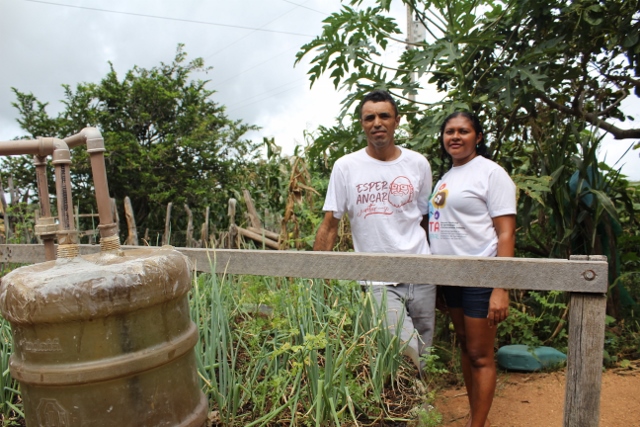

Early on, when the family saw the opportunity to get a biodigester, farmer Marcia Maria Montes da Silva, 37, Vanderlei’s espouse, doubted the news. “All from the beginning, Vanderlei said he wanted the biodigester, but I was in doubt. I remember saying, ‘Gosh, is that really going to work? I just believe when I see it!’. Then, when they built it and we saw that it worked, he said: ‘See? Do you believe it now? You can put your hand on the stove to see if the fire is real”, he said, laughing at the memory, but today they can see the improvements brought by the technology. “The biogas arrived through CETRA and has since changed our lives. We do not need to use the wooden fireplace anymore, nor are we afraid that the cooking gas will finish. Just the fact that we no longer need to buy gas canisters…the money we would spend to buy gas canisters is enough to buy other things”, he says.
The biodigester is a social technology that enables the decomposition of organic matter (animal feces), producing high quality biogas and biofertilizer. Its structure is composed of a “feeder” where the fresh feces are deposited. From there they gravitate down through a pipe until reaching a cement box where water is poured in to dilute the manure. It goes then to another space in which there is a plastic box that sits on top of the organic material. This space is hermetically sealed, which accelerates the manure decomposition by generating carbon dioxide and methane. The gases are finally captured by a filter made from a 20 liter water flagon and go through a tube straight to to the mouth of the home stove.
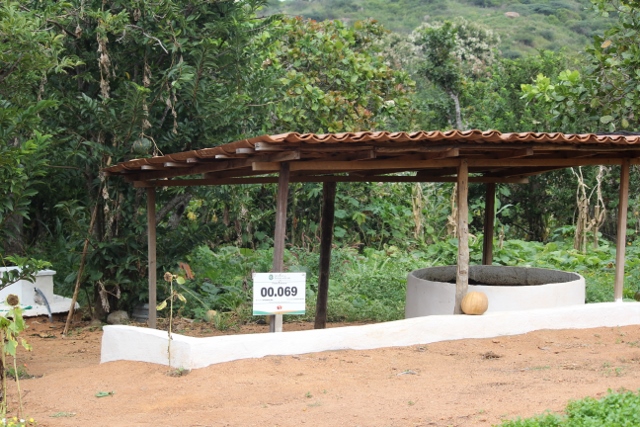
Part of the gray water reuse system


